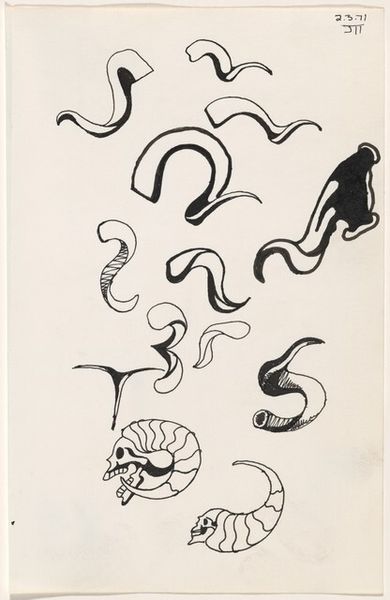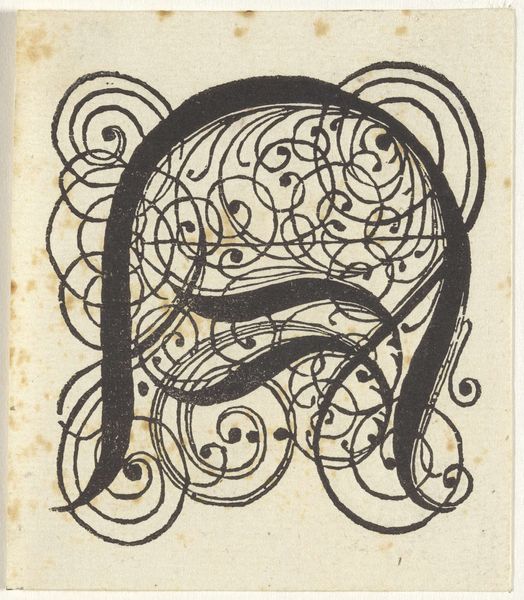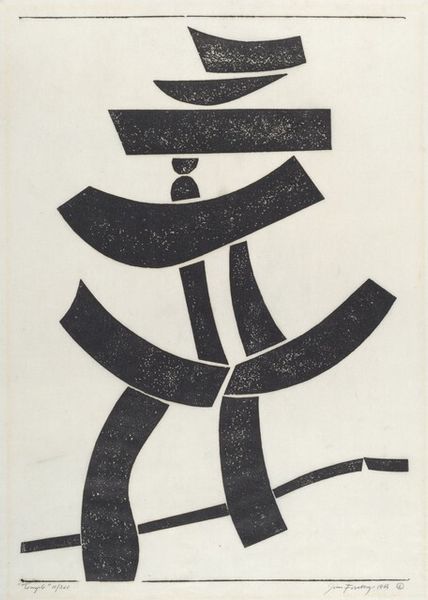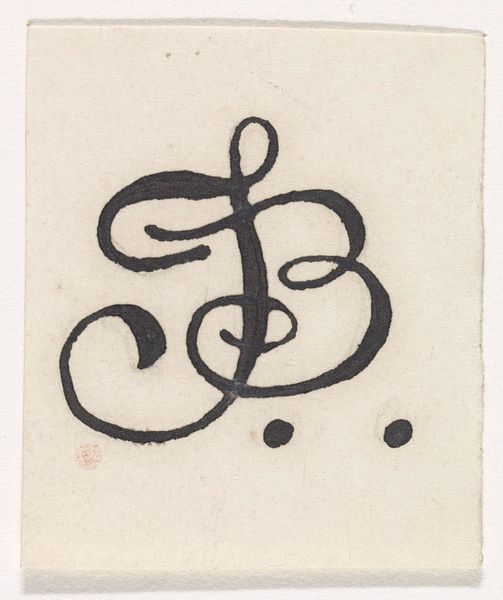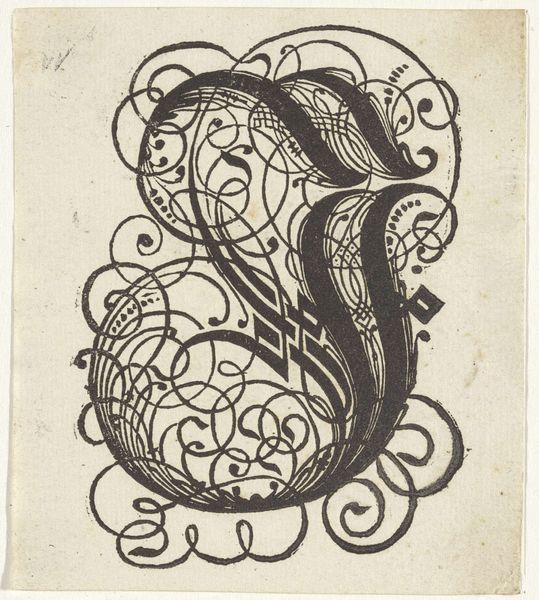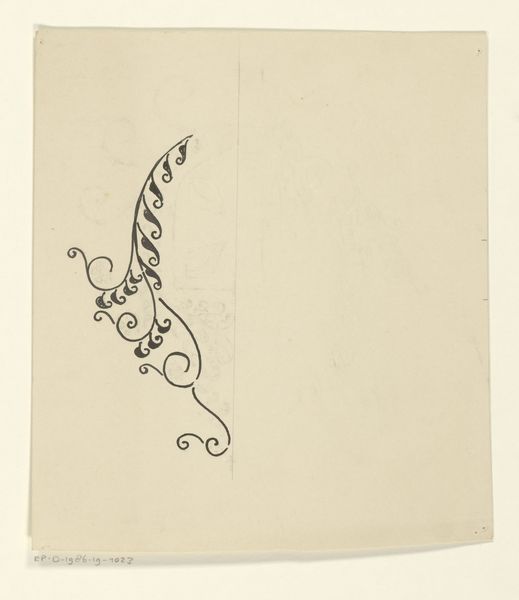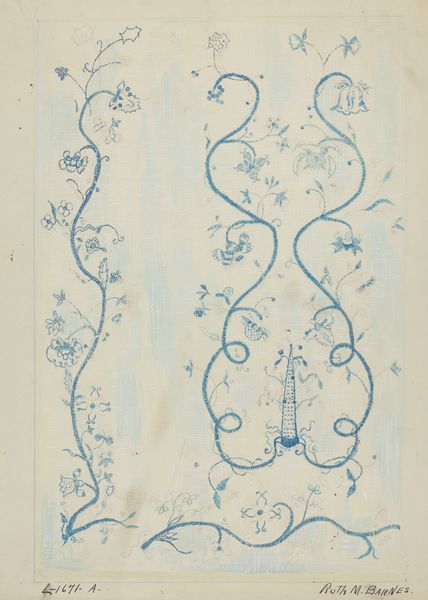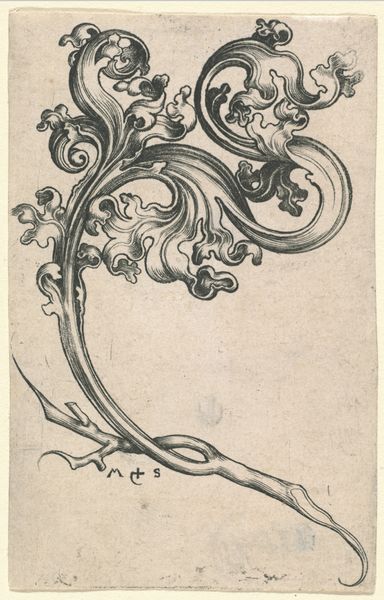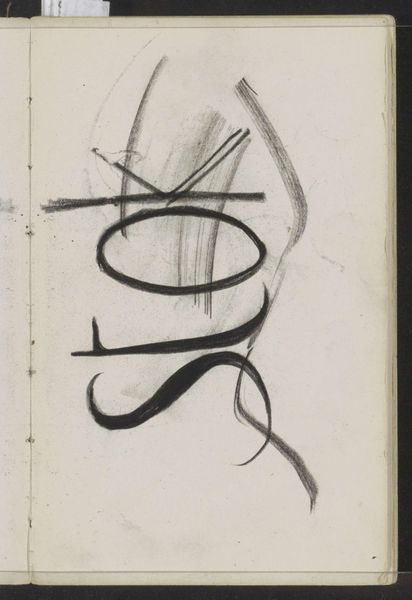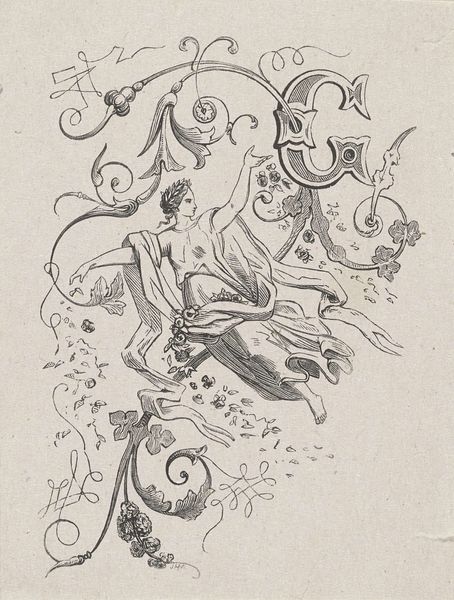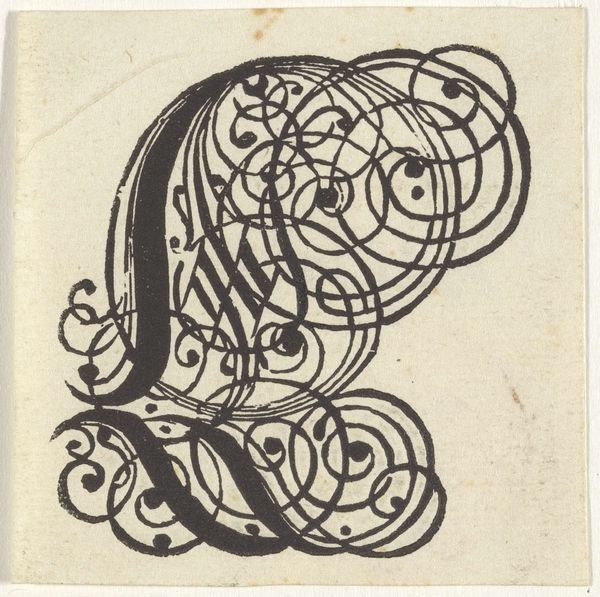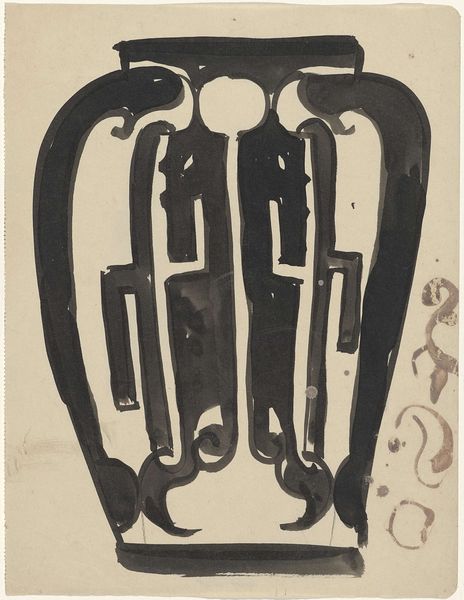![Untitled 2-3-71 [study for "tattoo" book] by James McCracken Jr.](/_next/image?url=https%3A%2F%2Fd2w8kbdekdi1gv.cloudfront.net%2FeyJidWNrZXQiOiAiYXJ0ZXJhLWltYWdlcy1idWNrZXQiLCAia2V5IjogImFydHdvcmtzLzYyNDAwYWJmLWRlZDQtNDYyYi1hMDE0LTMwMjM5YWNiNGUwZC82MjQwMGFiZi1kZWQ0LTQ2MmItYTAxNC0zMDIzOWFjYjRlMGRfZnVsbC5qcGciLCAiZWRpdHMiOiB7InJlc2l6ZSI6IHsid2lkdGgiOiAxOTIwLCAiaGVpZ2h0IjogMTkyMCwgImZpdCI6ICJpbnNpZGUifX19&w=1080&q=75)
drawing, ink
#
drawing
#
pen sketch
#
ink
#
geometric
#
abstraction
#
line
Copyright: National Gallery of Art: CC0 1.0
Curator: We're looking at a 1971 work by James McCracken Jr. titled "Untitled 2-3-71 [study for "tattoo" book]". It's an ink drawing. Editor: Well, immediately, I see this striking combination of organic and geometric forms, which creates an unsettling, surreal mood. It's a bit unnerving, but also very precise. Curator: Indeed. McCracken's study utilizes the stark contrast of black ink on the white paper to emphasize the linear quality. The repetition of 'S' shapes alongside those insect-like figures is quite striking in its organization on the page. Editor: Those shapes, while abstract, are suggestive, almost calligraphic. Are these studies for tattoos connected to the cultural context of tattoos at the time, reflecting a rise of interest in counterculture and body art? It's almost a subversive comment about how symbolic form and decoration can take different forms in societies. Curator: The artist clearly experiments with line quality and composition, there seems an intent here. Notice the varying degrees of fullness in the ink, how it creates volume and shading within these otherwise flat shapes. We are aware of the tattoo thematic through its title and should be wary of dismissing the composition's semiotic play with our assumptions. Editor: That attention to the density of the lines and form—I do agree that the visual elements generate tension. This page seems a bit anxious in that there is not one central, overriding focal point. Instead it feels as though the eye travels, and jumps. Curator: Agreed. It's as if the negative space is as important as the drawn elements themselves, constructing meaning through absence and presence. This dynamic back-and-forth encourages our perceptual system to explore this page, seeing each figure in dialogue with others. Editor: Thinking more broadly about its possible role as a tattoo study, what the reception was? It pushes you to consider how tattoos interact with power structures within and beyond a social body? It's really a brilliant glimpse at how art can function as a form of societal critique. Curator: Absolutely. The impact comes down to McCracken's strategic arrangements on paper. This seemingly straightforward drawing unlocks deeper questions surrounding social and visual communication strategies.
Comments
No comments
Be the first to comment and join the conversation on the ultimate creative platform.
